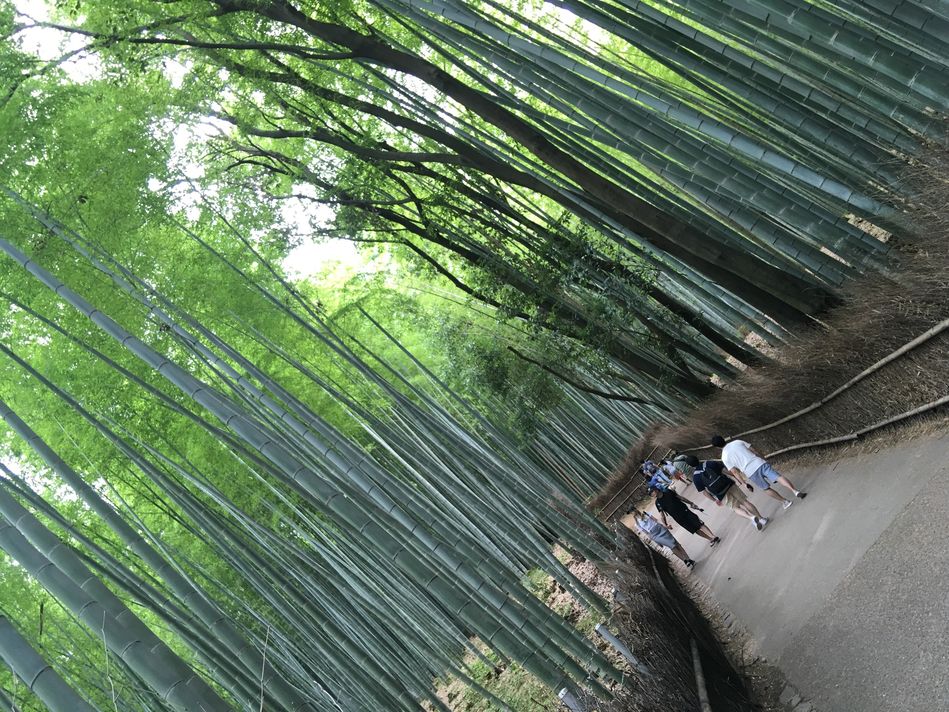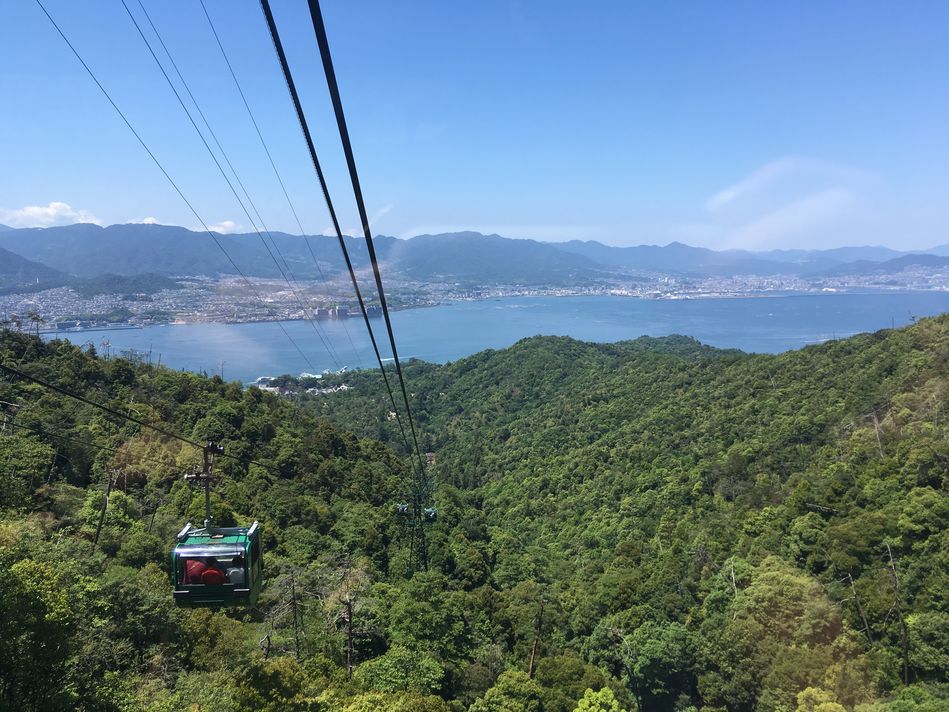Article content
23 July 2018 by Stav Banks
Japan has the unique ability to surprise, astound and shock even the most discerning traveller; a pristine, peaceful, multifarious mix of awe-inspiring landscapes, hot spring-laden national parks, fairytale towns and world-class gastronomy, interlaced with a palpable sense of history that's embodied in myriad museums, temples and shrines. It all effortlessly combined to become one of the most unique and special countries I have ever had the pleasure of visiting.
After a 12-hour flight, I was welcomed by a friendly face and, of course, a welcoming bow. After checking in to my hotel and meeting my fellow travellers, I was taken to a welcome dinner in Ginza, which is where my overeating began! There were about eight different dishes given to us, all beautifully presented, alongside a few bottles of local sake of course! I got an early night after the long flight, then the next day the first stop on the itinerary was Kiso Valley, situated between Tokyo and Kyoto and host to the famous Nakasendo trail.

Nakasendo Trail
This was originally one of the ‘Five Routes’ of the Edo period, travelled by feudal lords on their way to the capital. Spanning 540 kilometres of stunning mountainous terrain, it features 69 station towns where travellers used to rest during their long journey. We were welcomed by the children of the village with homemade gifts and snacks, and taken to our next feast at our ryokan (a traditional Japanese inn). After overeating (again!) it was time to burn off some calories kayaking in the serene Ontake Lake.

Ontake Lake
After a lovely few hours we headed to a local onsen (hot spring bath) – and enjoyed a well-deserved soak after our arduous kayaking trip! We were then each given a yukata, a traditional Japanese kimono, and presented with yet another eight-course traditional meal. It was the next morning, though, that I was introduced to my first Japanese breakfast – which was interesting to say the least! It consisted of somewhat bizarre ingredients such as seaweed, steamed fish and miso soup, to name a few.

Nakasendo Trail
The next two days were spent hiking the spectacular Torii Pass and Magome Tsumago trail. Much of the trail is spectacularly well-preserved, in particular the Nakasendo section, all winding cobbles lined by charming traditional houses. This section took about three hours but it's easy to do at a lovely leisurely pace – and needed to take in all the delights that you'll pass! We then reached Narai, a post town which marks the halfway point between Kyoto and Tokyo. This section (the Torii Pass) is particularly strenuous, so, historically, travellers often needed to stop and rest here. As a result, Narai grew to be one of the most prosperous towns in the Kiso Valley, receiving the nickname ‘Narai of a Thousand Houses’ due to the sheer abundance of guesthouses.

Magome-Tsumago, Nakasendo Route
After a wonderful time in Kiso Valley it was time to say goodbye to the group and catch the next bullet train to Kyoto, a wonderland of palaces, Zen gardens and cultural treasures and one of my favourite parts of the trip. I was lucky enough to have my own private guide who had a wealth of knowledge of the area – I'd definitely recommend this to get a real sense of the city and explore its hidden and more discernible delights. Together we saw some of Kyoto’s iconic sights, such as the Arashiyama bamboo grove and Fushimi Inari Shrine, as well as going Geisha spotting among the wooden machiya houses of the famous Gion district.

Arashiyama Bamboo Grove, Kyoto
My next stop was Hiroshima and, despite the suffering of the past, today Hiroshima is a peaceful, thriving and modern city. I spent my first day travelling to the nearby island of Miyajima, most famous for its giant orange Torii gate, which at high tide seems to float on water. After stepping off the ferry, I was welcomed by friendly deer who had come from the dense forests that sprinkle the island, and found myself strolling through the shopping street lined with tiny shops and restaurants.

Torii Shrine, Miyajima
Although the floating Torii gate is top of many a traveller's bucketlist, there are so many other sights to see on this tiny island, such as numerous hiking routes, shrines, temples and of course the viewpoint for endless panoramic vistas.

Miyajima Viewpoint
The next day was spent learning about the atomic bomb at the sobering War Museum and Atomic Bomb dome, a harrowing but important must-visit in Hiroshima. I then headed to the bustling city of Osaka, known for its modern architecture, nightlife and hearty street food. I soon found myself happily immersed in the madness of Dotonbori, Osaka’s premier tourist destination, all flashy billboards, bustling nightlife and some of the best food in Japan. It’s here I had one of my favourite meals of the trip – Kobe beef, taken from Japanese cows that are given a daily massage to produce the marbling effect that gives the beef its delicious flavour.

Osaka
My final stop was splendorous Hakone, a mountainous town known for its hot spring resorts and spectacular views of the iconic volcano Mount Fuji. I made my way to my ryokan and was treated to a beautiful room with a private onsen on the terrace which I took full advantage of!

My ryokan, Yamanochaya
The next day was spent making use of my Hakone free pass, where I visited the stunning Lake Ashi and famous Hakone ropeway – unfortunately it was a bit cloudy so I didn’t get a glimpse of Mount Fuji, but it was nonetheless a spectacular place and definitely a must-visit.

Lake Ashi
Japan was definitely the most unique country I have ever travelled to. From the unusual dishes that even the most adventurous foodie would need need convincing to try to the many meanings of bows, as well as the thousands of vending machines offering everything from fish soup to umbrellas, the beautiful cherry blossoms found on every corner, and the unbelievable cleanliness and efficiency, it will always be one of my favourite destinations.




